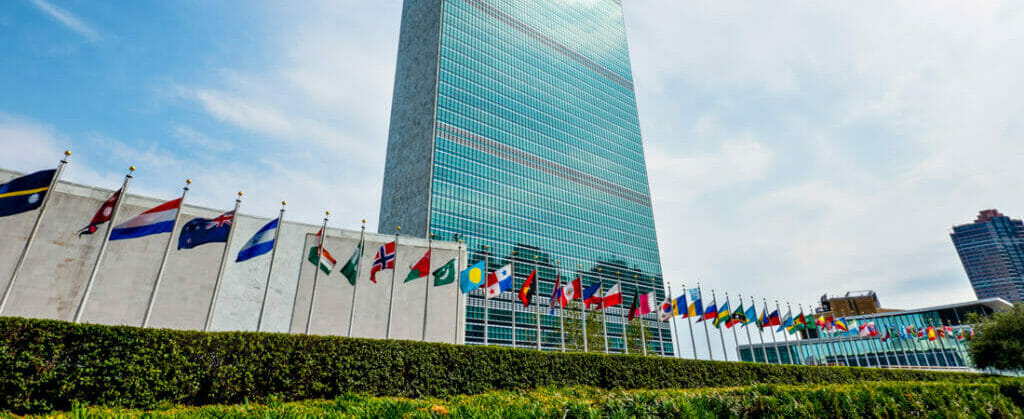The international community is facing a triple planetary crisis: climate change, biodiversity loss, and pollution. These challenges are deeply interconnected and cross national borders, meaning no country can solve them alone. Under the framework of the UN Environment Assembly (UNEA), countries must work together to develop multilateral responses that are effective, inclusive, and sustainable.
These three terms highlight a different dimension of what makes multilateral action on the triple planetary crisis work in practice.
“Effective” actions are actions that solve problems.
“Inclusive” actions give all stakeholders —especially developing nations and small island states, indigenous peoples, and vulnerable groups — a voice in the decision-making process so that their concerns are reflected in outcomes, ensure that solutions do not unfairly burden those with the least capacity to act and that support (financial, technological, capacity-building) is available for those who need it to ensure a just transition for workers in affected industries (e.g., those reliant on plastics production or fossil fuels).
And “sustainable” actions refer to solutions that last over time, balance environmental, social, and economic needs (the three dimensions of sustainable development), and avoid creating new problems.
Climate change is accelerating, with global temperatures projected to rise beyond 1.5°C in the coming decade, threatening ecosystems and human societies. Extreme climate events are increasingly disrupting markets (e.g., floods in Pakistan destroyed farmland and disrupted cotton exports), supply chains (e.g., severe flooding in Thailand shut down factories, causing months-long shortages in hard drives and car parts worldwide), resource security (e.g., melting glaciers in the Himalayas threaten the long-term freshwater supply for millions of people), and damaging infrastructure (e.g., Hurricane Maria in Puerto Rico crippled the power grid, leaving residents without electricity for months).
At the same time, biodiversity loss has reached critical levels, with more than one million species at risk of extinction due to human activity such as deforestation and overexploitation. Pollution continues to undermine environmental quality and human health, contributing to millions of premature deaths annually and damaging vital ecosystems.
From another angle, the triple planetary crisis The triple planetary crisis—climate change, biodiversity loss, and pollution—threatens all three dimensions of sustainable development: environmental, economic, and social.
– Environmental dimension: Climate change is driving stronger storms and rising seas that destroy ecosystems; biodiversity loss is causing the collapse of food webs, such as the decline of pollinators that many crops depend on; and pollution contaminates rivers and soils, making them uninhabitable for wildlife.
• Economic dimension: Climate disasters like prolonged droughts in the Horn of Africa devastate agriculture and food markets; biodiversity loss reduces opportunities for sectors like tourism and fishing that depend on healthy ecosystems; and pollution, such as plastic waste in oceans, harms fisheries and shipping industries.
• Social dimension: Climate change displaces communities through sea-level rise, threatening housing and security; biodiversity loss undermines cultural traditions and indigenous livelihoods tied to local species and ecosystems; and pollution directly harms human health, as seen in millions of premature deaths each year from air pollution.
The social dimension is sometimes less obvious than the environmental and economic ones, but it is just as important because it touches directly on people’s rights, dignity, and daily lives. So, when we say human rights are at stake in the triple planetary crisis, we mean that basic rights to life, health, food, water, and housing.
Because these issues are global and interconnected, isolated national efforts are not enough. Multilateral cooperation is needed to build coherent policies, strengthen accountability, and ensure that vulnerable and marginalized communities have a voice in decision-making. At stake are not only environmental protection and human rights, but also economic stability, as In order for multilateral responses to be effective, The main dilemma in addressing the triple planetary crisis is: How do we create agreements that respect each country’s right to make its own choices about how it develops and uses its resources while ensuring they also accept real
obligations to act together?
Climate change, biodiversity loss, and pollution don’t stop at borders. One country’s decisions can directly harm others—for example, carbon emissions from one nation contribute to rising sea levels that threaten low-lying island states, or plastic waste from rivers in one region ends up polluting oceans worldwide.
The challenge is that countries often fear losing control over their policies if they accept binding international rules. For instance, a country that depends on coal for jobs and energy may resist strong global climate agreements because they seem to restrict national choices. At the same time, without cooperation, no country can effectively solve these crises alone.
In the search for solutions, Member States also need to consider what economic tools can help tackle the triple planetary crisis by shaping the incentives that drive national policies. Some tools to consider include:
Carbon pricing which makes polluting more expensive and clean energy more attractive, nudging companies and consumers toward greener choices;
Green finance—like investments in renewable energy, sustainable farming, or ecosystem restoration—which can channel money into projects that protect nature instead of harming it; and,
Fair trade rules which can prevent “pollution havens,” where companies move dirty production to countries with weaker environmental standards.
If left unchecked, climate change could drive mass displacement, and trigger more frequent disasters. Biodiversity loss could lead to ecosystem collapse, threatening food security, water supplies, and livelihoods that billions of people depend on. Pollution—from plastics to toxic chemicals to air pollution—will continue to harm human health, reduce life expectancy, and damage the natural systems that support life. Together, these crises risk undermining the health of the planet, economic stability, social cohesion, and human rights, widening inequalities both within and between countries. In short, what’s at stake is the wellbeing of people and the future of the planet.


